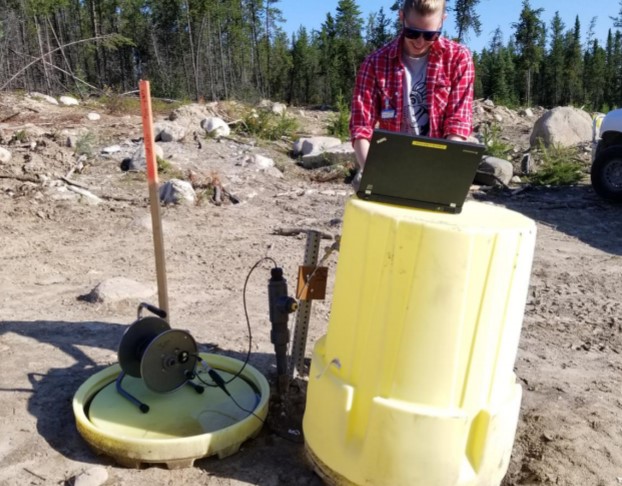Denison updates ISR tests, finds new high grade uranium zone at Wheeler River


Denison Mines (TSX: DML; NYSE: DNN) has good news from the 90%-owned Wheeler River uranium project in Saskatchewan. First, the in-situ recovery (ISR) tests of phase 1 of the Phoenix deposit are progressing well. And second, exploration has resulted in the discovery of additional high grade uranium mineralization outside the existing resource envelope.
All five new commercial wells for the first phase of testing are complete. The wells are spaced between 5 and 30 metres apart, and they can be used to further hydrogeologic tests and down-hole permeability testing.
The company noted that nine of the 11 monitoring wells have been installed and outfitted with equipment. They will be used to observe current and future hydrogeological tests. The final two monitoring wells are scheduled to be completed in early August.
The new high grade discovery made in hole GWR-045, originally drilled as part of the program to install monitoring wells northwest of the test pattern. Based on the Phoenix block model, the hole was expected to intersect low grade mineralization. Instead, it cut 8.6 metres of 22.0% uranium oxide (U3O8). The zone is open to the northwest, leading to the possibility that the Phoenix resource can be expanded.
The Wheeler River project covers two deposits, Phoenix and Gryphon. The high grade Phoenix deposit contains 166,000 indicated tonnes grading 19.1% U3O8 (containing 70.2 million lb. U3O8) and 9,000 inferred tonnes grading 5.8% U3O8 (containing 1.1 million lb. U3O8). The lower grade Gryphon deposit contains 1.6 million indicated tonnes grading 1.7% U3O8 (containing 61.9 million lb. U3O8) and 73,000 inferred tonnes grading 1.2% U3O8 (containing 1.1 million lb. U3O8). On a 100% basis, the two deposits contain 135 million lb. uranium oxide.
The Phoenix prefeasibility study outlined a $322.5-million initial capital expenditure for a mine with a 10-year life. All-in sustaining costs are estimated at US$8.90 per lb. U3O8.
Most of the Phoenix infrastructure could be used to mine the Gryphon deposit. A second mine would have an expected life of 6.5 years and cost $623.1 million to build. The all-in cost would be US$22.82 per lb.
More details are available at www.DenisonMines.com.
Comments